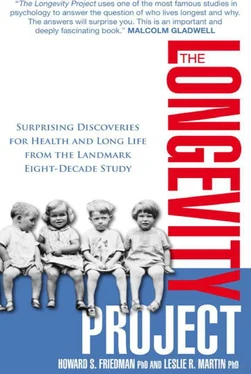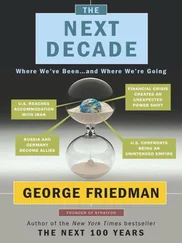It is from these modern fields that we have drawn the concepts, scientific measures, and statistical analyses needed to understand why some of the Terman participants thrived while others succumbed. We discovered that people spend too much time worrying about rare events like meteor strikes and pay too little attention to their own inclinations, behavioral patterns, and health trajectories.
If a middle-aged man develops heart disease, his cardiologist typically would not delve deeply into whether he had been a prudent child, if he is successful in his career, or if he had been divorced and remarried. Yet personality, family, work, and social relations turn out to join together and be highly relevant to later healthy or unhealthy paths. Ironically, a philosopher from the Middle Ages might have understood individual differences more quickly than modern-day health professionals do. How did this happen?
In the nineteenth century, a young doctor, the Hungarian physician Ignaz Semmelweis, shocked the medical world by arguing that the often-fatal “child-bed fever” of mothers in labor could be prevented if physicians, midwives, and nurses would wash and disinfect their hands and medical utensils. His brilliant insights were initially met with scorn and disbelief by his contemporaries. Dr. Semmelweis was disheartened and suffered a nervous breakdown, but it was not surprising that his hardworking colleagues resisted the notion that they were contributing to their patients’ illnesses.
Not long after, however, the French biochemist Louis Pasteur and his associates experimentally proved the existence of infectious microorganisms—germs. Germ control processes and the pasteurization of milk were developed. In the following decades, medical treatment was revolutionized and standardized care introduced. By 1890, surgeons had fully recognized the importance of sterile operating fields and antiseptics. Modern medicine began to flourish, but—here’s the rub—the individual became less of a focus. Before that time, explanations of susceptibility to illness came from traditions that focused not on bacterial invaders but on the individual. For example, for generations, clergy had looked at the person to see what sinful behaviors might have brought on illness; it was clear that only some people were prone to disease, and so repentance or exorcism of evil spirits might be the treatment.
In the age-old philosophical establishments, there was likewise a person-centered focus. Are you someone of healthy temperament, optimism, and ruddy complexion? In the Hippocratic tradition, you would be labeled as sanguine —a person with a healthy, balanced supply of blood. For nearly two millennia, followers of the ancient physicians Hippocrates and Galen saw four essentials—the so-called bodily humors—as the key to health. Excessive black bile was said to make one melancholic— sad, morose; it was believed to cause depression and degenerative diseases or cancer. Yellow bile in excess would make one choleric— peevish, angry, bilious; it was said to produce a bitter, angry personality and was associated with feverish diseases. Finally, phlegm was thought to make one phlegmatic— sluggish, unemotional, cold, and apathetic; it was associated for example with rheumatism. We have found that these “bodily humors”—although not scientifically valid in the ancient sense—can have valuable counterparts in modern approaches to health, in the form of scientifically derived personality traits. Personality is an excellent predictor of health and longevity, often in counterintuitive ways.
About twenty years ago, the two of us—one a young professor, the other his energetic new graduate student—were growing frustrated with the current state of research about individual differences, stress, health, and longevity. It was clear that some people were more prone to disease, took longer to recover, or died sooner, while others of the same age were able to thrive. All sorts of explanations were being proposed—anxiety, lack of exercise, nerve-racking careers, risk taking, lack of religion, unsociability, disintegrating social groups, pessimism, poverty, poor access to medical care, and type A behavior patterns—the so-called coronary-prone personality of competing hostilely to do too much in too little time. But there was no good way to test these explanations over the long term.
The best study to address such matters would be one that followed a large number of individuals throughout their lives. It would be a study that measured their personalities, their careers, their habits, their stresses, and their health and longevity. Could we do such a study? It would cost many millions of dollars and, most troublingly, we ourselves would be long dead before the results came in (which would not be much fun at all).
Then one day it struck us. Right down the hall from our lab, one of our colleagues, Dr. Carol Tomlinson-Keasey, was studying women’s stress, using an old archive at Stanford University. It was the Terman study. We wondered, could this study be adapted to our needs? The bad news was that little health and longevity information was easily available in the archive. The good news was that it was a life-span, decades-long archive, and the possibilities were enormous if we could gather and add all the needed new information.
After discussing the old data with Dr. Tomlinson-Keasey, we decided that yes, we would spend six months to a year examining predictors of health and longevity among the Terman study participants. Two decades later, we are still at it. The deeper we dig into the lives of these people, the more we understand about the pathways to longevity. (And yet, the occasional college student, hearing about our obsession, will properly advise us, “A twenty-year study! Get a life!”)
Dr. Terman had begun collecting his information shortly after World War I. Obviously he could not have used the same kinds of measures and assessments that we would select today. But Dr. Terman’s approach was amazingly prescient and smart. He gathered all sorts of facts and data that we have been able to convert into modern measures.
Personality Is Not Set in Stone
If it is true, as Wordsworth put it, that “the Child is father of the Man,” then childhood characteristics might lead, step by step, to lifelong patterns of health. For example, a sociable child would likely become a sociable adult, and that might be pertinent to good health. Is this the case? Is early personality very relevant to health in later life? Can childhood personality predict longevity decades into the future? Can we change personality and thereby improve health?
In 1922, Dr. Terman surveyed Patricia’s parents and teacher. How prudent was twelve-year-old Patricia? How truthful was she? Was she cheerful, with a sense of humor? Did she prefer to play indoors or outdoors? Did she like to go to parties? Dozens of such questions were asked, and the answers were duly recorded. But most of the rating sheets sat gathering dust in the archive, with no one thinking to see whether personality predicted lifelong health and longevity. Then suddenly one day we were in the right place at the right era, with a convergence of several lines of thought.
Because of doubts raised about the stability of personality, researchers have spent the past twenty-five years documenting what the proponents of the Greek humors knew two millennia ago—some people are indeed more agreeable, worrying, careful, sociable, and creative than others. 4 4 For a textbook on modern approaches to personality, see H. S. Friedman and M. W. Schustack, Personality: Classic Theories and Modern Research , 4th edition (Boston: Pearson Allyn and Bacon, 2009).
Although there is tremendous variability, there is also a substantial degree of order and constancy. If you return to your high school reunion many years after graduation, the popular and fast-talking extroverts are most likely to have become the successful salespersons and lawyers.
Читать дальше











